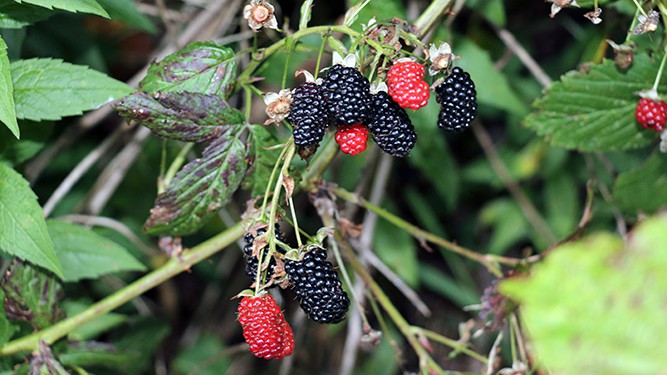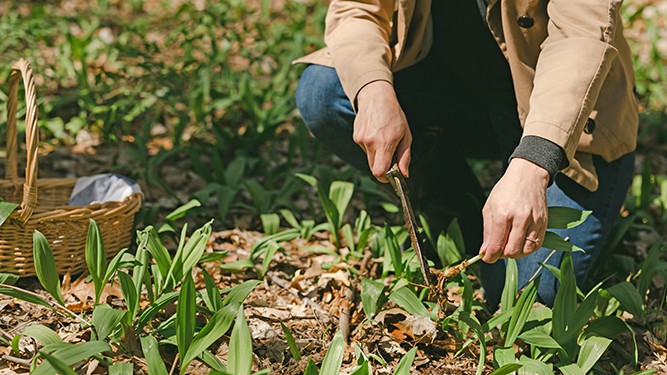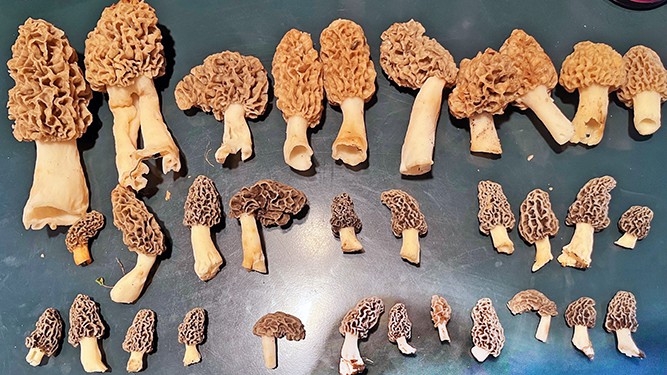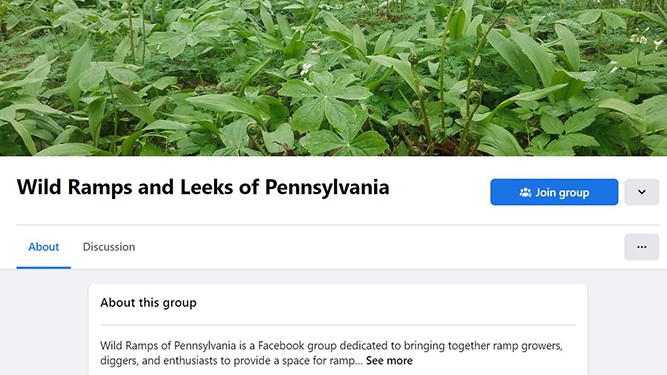Among the treasures that forests provide for us are wild plants that we can eat.
The practice of collecting plants, fungi, fruits, and nuts to eat is called foraging and is becoming popular.
During the pandemic, we flocked outdoors for our health and discovered a new interest in home cooking.
The cost of food also has people looking for options, since wild plants can be tasty, nutritious, and more-or-less free.
Social media has made foraging more accessible in terms of knowledge and education.
In Pennsylvania, some common forest foods collected include:
- Blueberries, raspberries, and other small fruit
- Mushrooms
- Ramps or wild leeks
- Hickory nuts, walnuts, acorns, and hazelnuts
Foraging in Pennsylvania State Parks and Forests

Blackberries in Elk State Park
In Pennsylvania state parks and forests managed by DCNR, you can gather edible wild plants or plant parts for your personal or family consumption, unless the plant is listed in as
threatened, endangered, rare, or vulnerable.
For instance,
ginseng is listed as vulnerable and cannot be collected on state lands.
Collection for business or commercial purposes is not allowed.
It’s important to note that the guidelines may be different on other public lands, such as in local parks, state gamelands, and the Allegheny National Forest, so always check first.
And always seek landowner permission before searching on private lands.
Help Protect Pennsylvania Forests When Foraging

Foraging ramps in spring
Treat nature with the importance it deserves. Plants and trees are part of a larger interconnected system, including wildlife and people, that depend on each other.
Removing plants or parts of them (berries, mushrooms, and nuts) can impact their ability to reproduce and thrive.
Foragers need to help sustain populations of wild plants while they are harvesting. Here’s what to do:
Take only what you can eat yourself. For example, the U.S. Forest Service limit for ramps found in the spring is up to two gallons per person, or about the amount that fits in a plastic grocery bag.
Always leave plants to mature and produce next year’s harvest.
Harvest in a way that minimizes harm -- never take the first, never take the last.
Use everything that you take.
Return soil, rocks, and wood disturbed to their original position.
When digging bulbs, use a soil fork or small hand trowel and a knife, rather than a large shovel.
Pinch off mushrooms at the ground level while leaving the roots and base.
Take pressure off wild populations of plants by propagating them and growing them on your property or as part of a community project.
Tips to Forage Safely

Foraged morel mushrooms
Some plants are poisonous and shouldn’t be eaten. Sometimes they look like what can be eaten.
Never eat any wild food without first being 100 percent sure of its identity. Some tips:
- Get a good guidebook.
- Don’t be overly ambitious.
- Spend time getting to know your local area.
- Tag along with an expert or take a class.
- Make sure the area has not been treated with herbicides.
- Harvesting along roads is not a good idea.
Foraging Information on Social Media

There are a number of foragers and groups whose popularity has grown on social media. Here are a few:
Use the hashtag #PaForaging when you post to share your knowledge with others!
Your local library also can help with resources.
Enjoy some of the many things that our forests provide; but remember that foraging responsibly will make sure those resources are there next year.